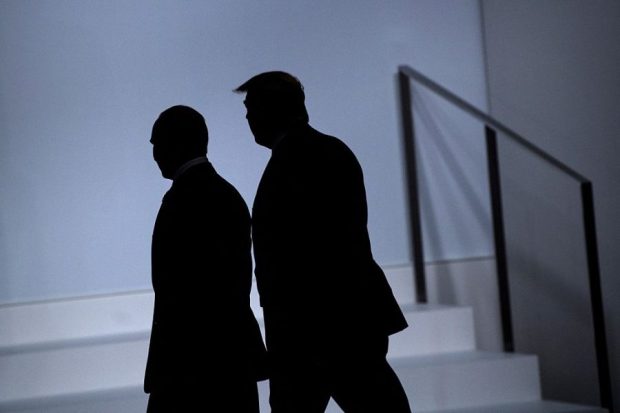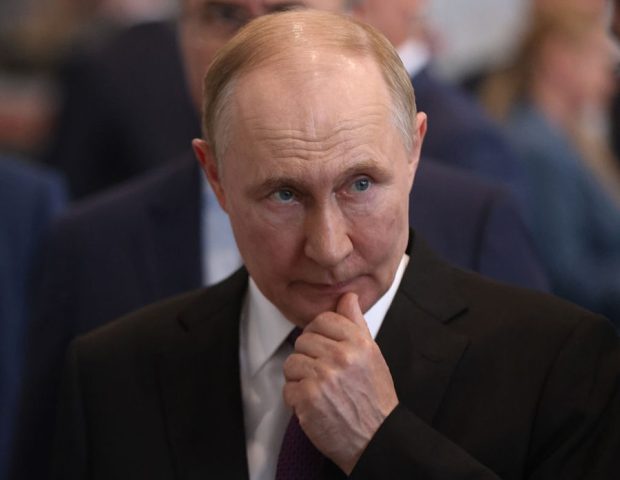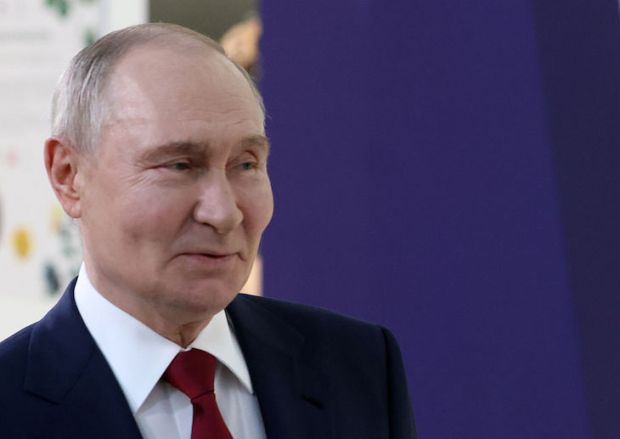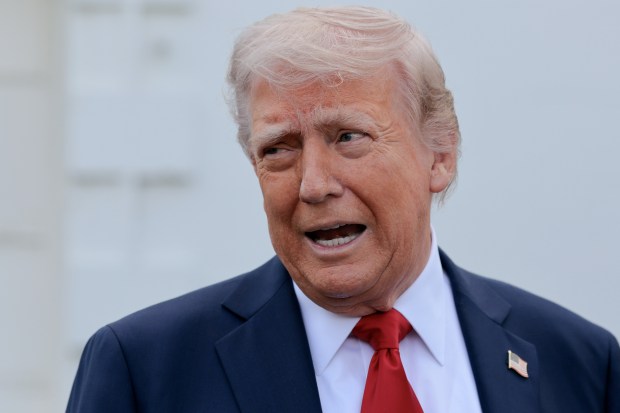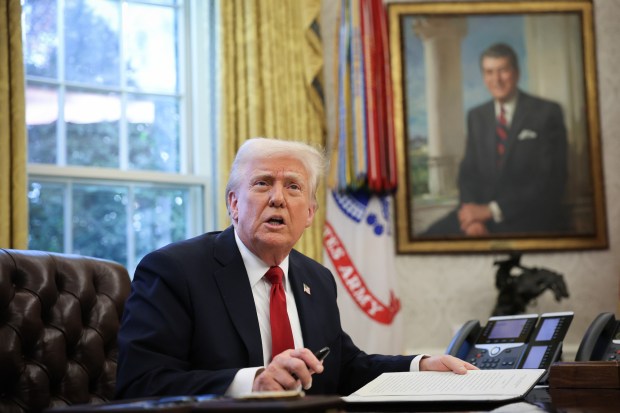The Trump-Putin press conference in Anchorage was 12 minutes that shook the world. Putin got precisely what he wanted, which was full personal rehabilitation as a respectable world leader. Donald Trump literally rolled out the red carpet for Putin and at the presser said that he had ‘always had a fantastic relationship with President Putin, with Vladimir.’ And though no deal was done over Ukraine, what Putin achieved was something far more valuable – a re-set of relations between Russia and the US.
Putin admitted that bilateral ties had fallen to the ‘lowest point since the Cold War’ but called for both sides to move on. ‘Not far from here lies the international date line where one can literally step from yesterday into tomorrow,’ said Putin. He spoke of a ‘constructive atmosphere of mutual respect,’ of ‘mutually beneficial and equal ties’ and twice called the newly reset relationship with America ‘businesslike’. Trump, for his part, praised both Putin and his team of ‘tremendous Russian business representatives.’
True, a planned lunch for the two delegations and a second, expanded round of talks was cancelled. Three of the five senior economics officials that Putin had brought didn’t get to sit down with their US counterparts. But that was because the Russians decided that they had already got what they had come for.
‘The way that it felt in the room… like Putin came in and steamrolled,’ reported Fox News correspondent Jacqui Heinrich. Putin ‘got right into what he wanted to say and got his photo next to the president and then left.’
Though no deal was reached, Putin did come away from the summit with one very significant practical victory. The Anchorage summit effectively swept away all of Trump’s previous ultimatums and threats of ‘severe consequences’ and replaced them with an open-ended negotiation framework that buys Putin time. More, Putin was able to pretend to be seeking peace and negotiation while in reality escalating offensive operations in Ukraine. And perhaps most important of all Putin made clear that he was not interested in a ceasefire but rather a comprehensive peace deal to be negotiated even as his forces continue their grinding advance in Donbas. And Putin clearly believes that Trump will be a pushover at the negotiating table.
‘Trump may sincerely want to end the war, but he does not have the mental capacity to negotiate with Putin,’ wrote Janis Kluge of the German Institute for International and Security Affairs. ‘You can’t be tough if you don’t understand the nuances of the issue you are negotiating. The result is that [Trump] gets manipulated.’
What was striking was how carefully the Kremlin had planned the choreography of the summit. The very location of Alaska – loaded with symbolism not only of a lost Russian Empire but also of second world war US-Soviet cooperation – was the idea of veteran Russian diplomat Yury Ushakov. Meeting at the point of the North Pacific where Russia and America nearly touch also allowed Putin to greet Trump as his ‘dear neighbour’. Enroute to the summit Putin stopped off at the former Gulag town of Magadan and there laid flowers at a monument to Soviet and American soldiers who were killed ferrying thousands of American planes gifted under Lend-Lease to the Soviet war effort. The symbolism was clear. Putin was honouring the men who died ‘for our common victory’ over Nazism, he told reporters. By implication, the US and Russia could unite again to oppose the supposedly Nazi regime in Kyiv.
Putin’s talking points were also precisely measured. He knows exactly what to say to please Trump, from confirming that the war would not have started if Trump had been president in 2022, to agreeing with Trump that Russian electoral interference in the 2016 US election was a ‘hoax’. Appealing to Trump’s greed, Putin spoke of the ‘tremendous potential’ for business cooperation. And to the outrage of many Ukrainians, Putin called the war that he himself started a ‘terrible tragedy for us’ and a ‘wound’ and insisted that Russians considered Ukrainians a ‘brotherly nation’. That is a clear echo of a common Russian narrative that the war was fomented by western interference in Kyiv’s affairs.
It was also clear that the Kremlin’s position has barely changed since 2022. When Putin speaks of the ‘root causes’ of the conflict he is saying that he sees an independent Ukraine that has the ability to defend itself is a fundamental threat to Russia. When he calls for a ‘fair balance of security’ Putin means restrictions on Nato deployments in the Baltics, Poland and Romania.
Small wonder that ultranationalist Russian philosopher Alexander Dugin called the summit ‘excellent… the best result that we could expect!’ Hungary’s prime minister Viktor Orbán wrote that ‘the world is a safer place today than it was yesterday’ as a result of the summit.
The big question now is whether Trump will follow up by putting more pressure on Russia – or more pressure on Ukraine to capitulate. Trump will meet with Zelensky on Monday in the Oval Office to discuss what Trump called ‘points that we negotiated [with Putin] and points that we largely have agreed upon. I think we have agreed on a lot… Ukraine has to agree to it, maybe they’ll say no.’
For Zelensky, the choice will be to agree to the terms Trump negotiated over his head – or refuse, and try to fight on with European help. Unfortunately for Ukraine, Putin doesn’t seem to care whether the endgame of the war plays out on the negotiating table or the battlefield. Putin believes that he can win either way.



